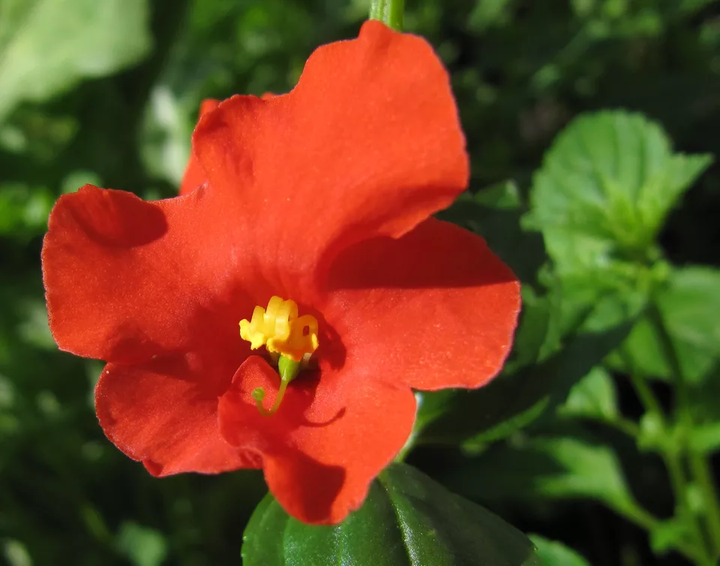The half-hardy perennial alonsoa, more commonly known as the mask flower, is a genus of 12 species of flowering plants in the Scrophulariaceae family. These herbaceous annuals make the perfect addition to any knee-high flower garden, and are closely related to figworts.
In frost-free regions, the mask flower can grow as a perennial, but thanks to its quick establishment and bloom time, it's most often grown as an annual. Their brilliant scarlet blooms grow on strong, wiry stems with rich green leaves.
Native to Central America, mask flowers typically bloom from early summer to late September with small, under one-inch flowers. They were named for Zenón de Alonso Acosta, a Spanish official based in Bogota.
Commonly grown as border plants or as part of a cutting bed, the mask flower has showy red petals which can sometimes appear to be more of an orange, red-orange, or coral color. They also have reddish-brown colored stems, and yellow stamens. These plants can occasionally be found with yellow, white, pink, or even blue flowers. Alonsoa plants have small and serrated, yet broadly oval, evergreen leaves.
Botanical Name:
Alonsoa
Common Name:
Mask Flower
Plant Type:
Annual/Perennial
Mature Size:
24-30 inches
Sun Exposure:
Full sun
Soil Type:
Well-drained, light, fertile
Soil pH:
6.1-7.8
Bloom Time:
Summer/Early fall
Flower Color:
Red/Orange
Hardiness Zones:
9-11
Native Area:
Central/western South America
Mask Flower Care
These plants will sometimes require staking if they grow to become particularly tall. They generally reach heights of between 24 to 30 inches and can have a spread of up to three feet.
Gardeners love mask flowers because they can attract ladybugs. They are also known to be a favorite amongst bees, butterflies, and birds. However, they can be prone to aphid attacks.
Light
Alonsoa plants will grow best when planted in full sunlight. They can also tolerate partial shade.
Water
Mask flowers have average water needs. While they will require regular watering, and the seeds should be kept moist until germination is complete, you should take care not to over-water. Doing this can damage or even kill your plants.
Soil
When growing mask flowers, the soil should be well-drained, light, and fertile. These plants aren't too particular about pH levels, but they seem to prefer a neutral or slightly alkaline variety.
Temperature and Humidity
The mask flower will require a specific temperature in order to grow: it must be between 59 to 68 degrees in order to have a successful planting. As a result, they will thrive in more temperate climates.
Fertilizer
The alonsoa is considered to be a fairly low-maintenance plant and doesn't necessarily need any additional fertilization. However, a yearly application of either fertilizer or compost on your garden beds can help to ensure their best possible growth.
Propagating Mask Flowers
Mask flowers can be propagated from seed. You'll want to stratify if you're planting indoors, or direct sow after the last frost when planting them outside.
When germinating mask flowers, you'll have the best luck with sowing their seeds right below the surface into prepared soil, particularly if you live in a region with a longer growing season. They can grow year-round in more mild west coast climates.
Just be sure to space them out about 12 to 15 inches, and plant in spring when the temperatures are becoming milder again.
If you're growing these plants indoors, try to sow the seeds about seven weeks before the last frost. They can handle transplanting and will typically take between 14 and 21 days to germinate. You can expect the process from flower seed to full flowering to take about 12 weeks.
Pruning
The mask flower doesn't require extensive pruning, but you can deadhead spent blooms to prolong their bloom season if desired. However, these plants are actually considered self-cleaning, so deadheading isn't a priority, as the petals will often fall off naturally.
After their bloom period, they can be trimmed back with a sharp pair of scissors or pruning shears. They should also have their meristems pinched back when they're approaching full growth, which will promote fuller blooms.
Growing in Containers
When growing in containers, be sure to sow the mask flower's seed in the late winter to early spring indoors. They can be moved up to larger pots and reseeded.
You Might Like ...